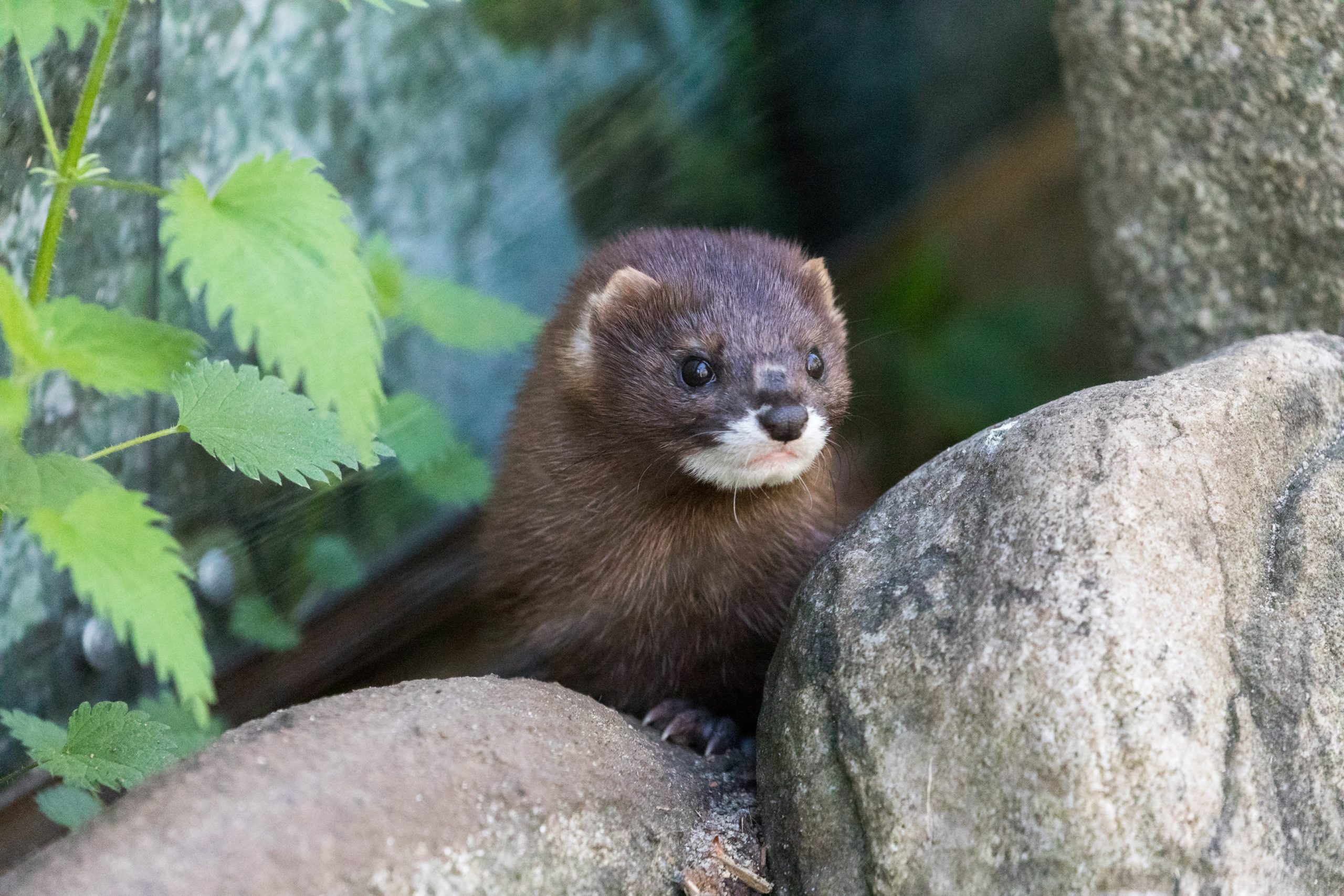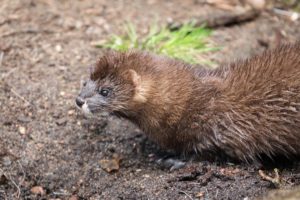
European mink
LIVING HABITS
The European mink prefers wetland areas and small, hard-bedded streams as their habitat. They primarily feed on voles, frogs, fish, crayfish and small mammals. The mink is night-active, an excellent swimmer, and prefers living alone outside the mating season. Earlier, the European mink was found in large areas in Europe and even in Finland all the way up to the regions of Kemi. The distribution of the European mink has declined by 80 % in Europe. In addition to the main breeding areas found in Russia since the 1900’s, some isolated populations of the species are found in some parts of Europe.
PROTECTION
The European mink is listed as critically endangered by the IUCN. The species is no longer found in Finland. The last spotting dates back to 1992. There perhaps is more than one reason for the decline of the European mink population. The American mink species can’t be the sole reason, as the European mink population decline started before the American mink was introduced to their regions. Due to the conservation and preservation efforts program at the Tallinn Zoo, the European mink has been introduced back to the Baltic Sea regions. The European minks at Ranua Wildlife Park are part of the European Endangered Species Program (EEP).
ADAPTING TO WINTER
The warm and thick winter fur keeps the cold away; as an aquatic species the European mink selects forest streams as habitat, as these most unlikely stay unfrozen over the winter.
European mink
Mustela lutreola
Class: Mammalia – Mammals
Order: Carnivora- Carnivores
Family: Mustelidae – Mustelids
Size: Weight: 300-900g, length: 28-44cm + length of tail 12-19cm, male larger than female.
Breeding: Heat: March-April, incubation period: 40-43 days and nights, offspring: 2-6 at a time. Independent in 3-4 months, sexual maturity reached in 10 months.
Lifespan: 8-10 years.


Did you know…
Did you know, that in spite of their similar appearance and living habits, the European mink and the American mink are not closely related? The polecat is a closer relative, and they may even crossbreed.




